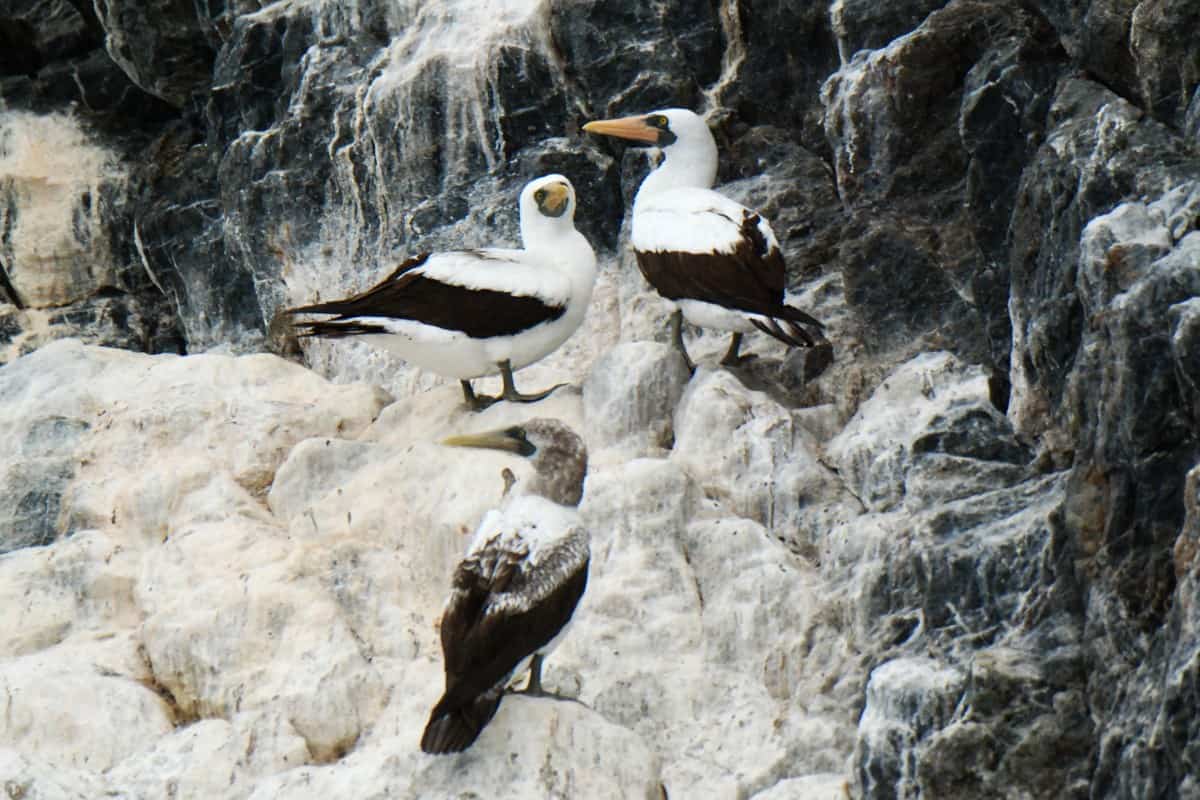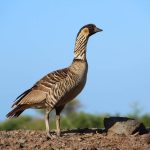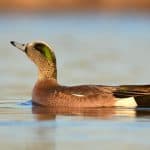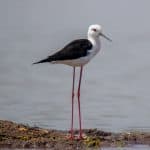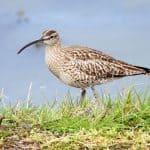Common Name: Masked Booby
Scientific Name: (Sula dactylatra)| Size | Diet | Range in Hawaii | Status in Hawaii |
|---|---|---|---|
| 60 in. - 64 in. | flying fish | Kaua'i, Moloka'i, Maui, Lana'i | Least Concern |
The Masked Booby, also known as Sula dactylatra, is a seabird species that is native to the tropical and subtropical regions of the world. The species is also an indigenous breeding visitor to Hawaii, where it has been a part of the islands’ natural ecosystem for centuries. With its distinctive appearance and unique behavior, the Masked Booby is a fascinating bird species that has captured the attention of birdwatchers and avian enthusiasts around the world.
In this article, we will explore the world of the Masked Booby, its unique characteristics, and its presence in Hawaii.
Masked Booby
Appearance
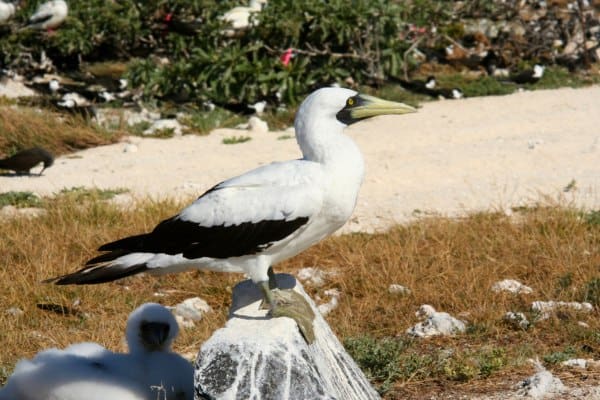
The Masked Booby stands out with its striking appearance in the avian kingdom. With a majestic wingspan of approximately 60 to 64 inches, this elegant seabird flaunts a contrasting black-and-white plumage, featuring a distinctive “mask” around its eyes, giving it an enigmatic allure. Its streamlined body and long, pointed wings enable agile flight and remarkable aerial acrobatics, making it a true master of the open ocean.
Diet
As a skilled predator of the open seas, this seabird is a masterful fisher, diving from impressive heights into the ocean depths to catch its prey. With precision and speed, it predominantly feeds on fish, especially flying fish, which it effortlessly snatches in mid-air.
But its culinary adventures don’t end there! The Masked Booby also enjoys a varied diet, including squid and other small marine creatures, adding to its gastronomic repertoire.
Nesting
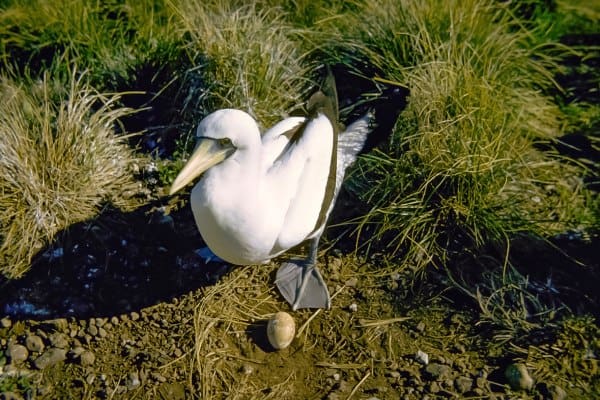
These seabirds are true experts in finding the perfect nesting spots on remote, tropical islands and atolls. With meticulous precision, they build their nests using sticks, grass, and other natural materials, creating sturdy and comfortable homes for their chicks.
But what truly sets the Masked Booby apart is its unique breeding strategy. Unlike many other birds, they exhibit an intriguing “delayed hatching” behavior. This means that the first-laid egg remains unhatched while the second egg develops. As a result, the second-hatched chick, often known as the “beneath,” enjoys a significant growth advantage over its older sibling, referred to as the “above.”
Behavior
As graceful flyers, these seabirds showcase remarkable aerial skills, effortlessly gliding and soaring above the ocean’s surface. Their powerful wings and keen eyesight make them exceptional hunters, diving from great heights to catch their prey with astonishing precision.
Beyond their flying prowess, the Masked Boobies exhibit fascinating social behaviors. They are known for their communal nesting colonies, where hundreds or even thousands of pairs come together on remote islands to raise their chicks. Within these colonies, they showcase remarkable courtship rituals, engaging in elaborate displays to attract mates and strengthen their bonds.
The sibling rivalry, or “siblicide,” seen in some colonies is a unique aspect of their behavior. As the delayed hatching strategy unfolds, the older chick competes with its younger sibling for food and parental attention. This natural struggle for dominance and survival adds a layer of drama to the booby’s family dynamics.
Habitat
With a preference for warm, subtropical and tropical regions, the Masked Boobies can be found in various parts of the world, from the Galápagos Islands to the Caribbean, the Indian Ocean, and beyond. These idyllic coastal havens provide them with abundant food sources, as the nearby waters teem with fish and marine life.
Range
The Masked Booby is a breeding visitor and indigenous species found in the Hawaiian Islands. In the Northwestern Hawaiian Islands, an estimated 2,365 pairs breed, with larger populations on French Frigate and Laysan. In the Southeastern Hawaiian Islands, breeding has been confirmed at Kaula Rock and Mokumanu islet off NE O’ahu.
Masked Boobies are occasionally seen flying around or roosting in other locations, such as Kaua’i, O’ahu, Moloka’i, Maui, and Hawai’i I. They are also observed uncommonly in offshore waters, with sightings around Kaua’i and O’ahu being more frequent.
Conservation Status

The Masked Booby (Sula dactylatra) is a seabird species that currently holds the conservation status of “Least Concern” according to the IUCN Red List. This designation reflects the overall stable or increasing global population and the bird’s ability to adapt to a range of tropical and subtropical habitats.
Interesting Facts
1. Unique egg coloration
The eggs of Masked Boobies have a distinct appearance, often showcasing varying shades of pale blue or green with irregular markings. This unique coloration helps them blend in with their surroundings on the nest and provides some camouflage from potential predators.
2. Long-distance foraging
When not nesting, Masked Boobies are skilled long-distance foragers, capable of venturing hundreds of kilometers away from their breeding sites in search of prey-rich feeding areas.
3. Hybridization with Nazca Booby
The Masked Booby has been known to hybridize with the Nazca Booby (Sula granti), another closely related seabird species. These hybrid offspring can sometimes be observed in regions where both species coexist.
4. Coping with arid environments
Some breeding colonies of Masked Boobies are established on remote islands with limited fresh water sources. To adapt to such arid environments, these birds have developed unique physiological mechanisms to conserve water and maintain hydration.
5. Marine indicator species
As bioindicators of marine ecosystem health, the population trends and well-being of Masked Boobies can serve as valuable indicators of the overall health of the oceans they inhabit.
Frequently Asked Questions
Are there any cultural or traditional significance associated with the Masked Booby in the regions where they breed?
Some indigenous cultures in the Pacific may have cultural or traditional associations with Masked Boobies, using their feathers or other parts in ceremonial practices or traditional crafts.
What is the typical lifespan of a Masked Booby?
In the wild, Masked Boobies can live for over 20 years, displaying longevity and adaptability to their oceanic habitats.
How do Masked Boobies recognize their nesting sites after long foraging trips at sea?
Masked Boobies have exceptional navigational abilities and can recognize their nesting colonies using visual cues and their remarkable memory.
Can Masked Boobies be kept as pets or in captivity?
No, it is illegal and highly discouraged to keep wild birds like the Masked Booby as pets, as they have specific habitat and dietary requirements that cannot be met in captivity.
How can the general public contribute to the conservation of Masked Boobies?
The public can support conservation efforts by participating in beach clean-ups to reduce marine debris, supporting organizations that focus on seabird protection, and raising awareness about the importance of preserving their natural habitats.
